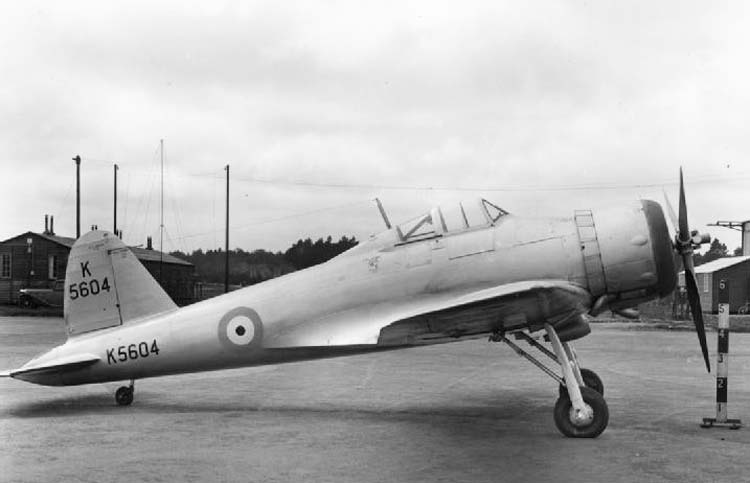Gloster F.5 / 34
The Gloster F.5/34 was a British fighter of the 1930s. It was a single-seat, single-engine monoplane of all-metal cantilever construction; the undercarriage was of the tailwheel type with retractable main wheels.
The aircraft was developed for Air Ministry Specification F.5/34, a fighter armed with eight machine guns and an air-cooled engine that was well-suited to operations in the tropics. The Gloster design was overtaken by more capable competitors and the specification was later abandoned, with none of the aircraft designs produced for it selected for entry into service.
In competition with the Gloster for the requirement were the Bristol Type 146, Martin-Baker M.B.2 and the Vickers Venom, which would be tested by the Aeroplane and Armament Experimental Establishment. By the time the F.5/34 began its flight tests, the eight-gun Hawker Hurricane was in service and the Supermarine Spitfire in production so that further development of the Gloster fighter was abandoned. Compared to its contemporaries, test pilots found the F.5/34 prototypes had a shorter take off run, offered better initial climb and were more responsive and manoeuvrable due to ailerons that did not become excessively heavy at high speed. Handling was considered very good and the all-round cockpit visibility was far better than the other designs. The Gloster F.5/34 debuted at the 1937 Hendon Air Show but soon after, prototypes K5604 and K8089 were relegated to experimental flying and finally as instructional airframes until May 1941.

Gloster F.5 / 34 K5604 
Gloster F.5 / 34 K5604 
Gloster F.5 / 34 K5604 
Gloster F.5 / 34 K5604 
Gloster F.5 / 34 K5604 
Gloster F.5 / 34 K5604 
Gloster F.5 / 34 K5604 
Gloster F.5 / 34 K5604 
Gloster F.5 / 34 K5604 
Gloster F.5 / 34 K5604 
Gloster F.5 / 34 
Gloster F.5 / 34 K5604 
Gloster F.5 / 34 K5604 
Gloster F.5 / 34 K5604 
Gloster F.5 / 34 K5604 
Gloster F.5 / 34 K8089
